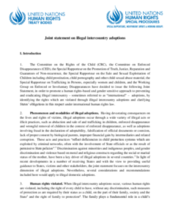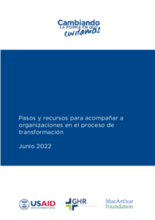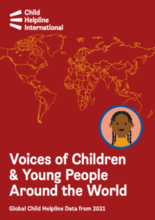Displaying 641 - 650 of 4401
The Adolescent Data Portal features global, regional and country-level data on key indicators together with information on the socio-economic contexts in which adolescents live are found here. The portal includes globally comparable indicators, closely linked to the Sustainable Development Goals (SDGs).
Institutionalised Children: Explorations and Beyond Journal encourages experts in care of children in institutional and alternative care to review the research in the journal and provide experienced insights to submitted papers. The editorial staff highly value the contribution of peer reviewers of the journal as the essential gatekeepers of its standards. Some perks for your review include free access to all SAGE journals for 60 days upon receipt of your completed review and a 25% book discount on all SAGE books ordered online.
Illegal intercountry adoptions may violate the prohibition of abduction, sale of or trafficking in children and the prohibition of enforced disappearances, a group of UN rights experts said today, urging States to take action to prevent and eradicate such illicit practices.
This joint statement was issued while the question of illegal intercountry adoptions is being raised in several countries, with an increasing number of adoptees discovering inconsistencies or errors in their adoption process, and that stories they had been told about their origins and the reasons for their adoptions were fake.
Family for Every Child invites you to participate, share your views and listen to children and young people on this topic. Join this event and be part of a global call to action to protect children from family violence.
Udayan Care invites you to their 4th in the series ICB's journal webinar.
Join Data for Impact (D4I) on September 27, 2022, at 9:30am EDT for a one-hour webinar introducing a new guide to build digital skills in the child protection workforce.
Este documento está diseñado para orientar a las personas u organizaciones que están apoyando un proceso de transición para pasar de proporcionar atención residencial a un modelo que promueva la atención familiar y comunitaria. El documento está diseñado en torno a las Fases de la Transición de Better Care Network. Se basa en el trabajo que Changing the Way We Care ha realizado en los últimos años para apoyar a diferentes proveedores de atención residencial, tanto religiosos como laicos, en su propio proceso de transición. Hay ejemplos y enlaces a herramientas relevantes, mensajes y actividades sugeridas que pueden utilizarse para apoyar las diferentes fases del proceso.
The aim of the conference is, therefore, to create a platform for all stakeholders to share and understand their role and responsibilities in supporting children in care and care leavers.
Conference sub theme include but not limited to:
In order to understand the issues faced by the children and young people who get in touch with child helplines, Child Helpline International interviews members around the world every year to gather information about the contacts they receive. This report provides an overview of the information recieved for 2021.



